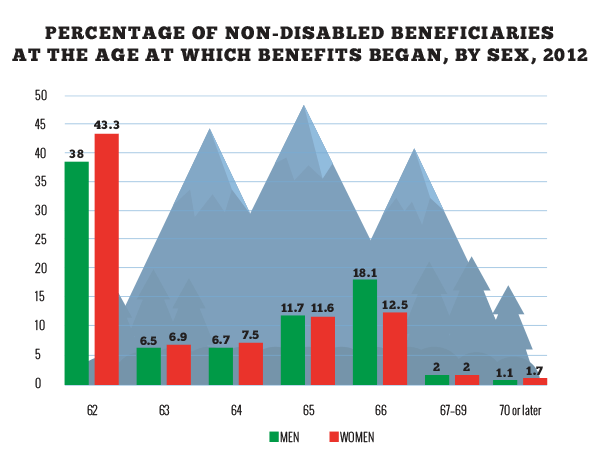
As I read recent research on the economy and investments, two images came to mind: a canoe, and a car pulling a trailer.
The first piece of research focused on the outlook for long-term interest rates. It had me wondering whether current and future retirees will remain in a low-interest environment, like being stuck in a canoe without a motor. The current investment environment reminds me of an overnight canoe trip that I took as a teenager. The first day was full of excitement and motion, with everyone enjoying the ride assisted by the strong current. By the middle of the second day, we reached the backwater of the dammed-up river, and the endless paddling in still water numbed the arms and the mind. We thought it would never end.
Recently, after nine years, we saw the first rise in interest rates. Meanwhile, oil prices have fallen across the globe, and China's economic engine is sputtering. In England they are not predicting a rise in interest rates until 2019, if not later. I'm afraid that we may be paddling in this pond for a long time. The current investment environment has me convinced that Social Security may be one of the most under-valued components of the retirement income equation. Deferring the claiming of benefits in this low interest environment may be one of the most important financial decisions that a couple can make.
That said, the second research article centered on designing the "best" combination of investments for a couple approaching retirement. The authors proposed that the hypothetical clients set out on their retirement journey with a healthy pot of money in the cookie jar and $24,000 of annual Social Security benefits as their foundation. The analysis then proceeded to look at three different ways to invest the nest egg to allow for the most flexibility in retirement.
Let's compare this approach to one of three different families that are about to go on an extended vacation, car and trailer included. They have all been assigned the same vehicle, and the financial advisor’s job is to help them pack the trailer. I suppose the theory of this exercise is to see which couple will have the best trip, all other things being equal.
But all things are not equal, and assuming the same starting point for the foundation of this retirement income plan is all wrong. We know that for each year a Social Security recipient delays retirement after 62, he or she will get an increase in benefits. Assigning everyone the same make and model of a car ignores the fact that your client may have the ability to pick a 4-, 6-, or 8-cylinder engine, with each upgrade making a world of difference on a long-haul trip.
Could it be possible that our travelers might be better off selling off some of the contents of the trailer and purchasing a larger engine for the car? Considering the economic realities of the past 10 years and some forecasts that suggests we may be in for more of the same, isn’t the 8% increase in delayed credits after Full Retirement Age worth a serious look?
Let’s say you are working with a dual-income baby boomer couple. Each worker has a Primary Insurance Amount (PIA) of $1,800 at their Full Retirement Age, and they are the same age. If both delay to age 70 (not counting the cash flow from a claim for restricted benefits), their monthly income will have a guaranteed increase of $576 each. Total household income at age 70 will increase by $13,824 assuming there are no additional cost-of-living adjustments. Compare that income increase with the amount of retirement plan assets needed to produce $13,824 a year using a 4% portfolio drawdown rate. The couple would have to accumulate an additional $346,000 in assets to produce an equivalent income stream. That is the effect of partially delaying Social Security retirement benefits for just four years.
I know that some people will say, hey wait a minute, it’s not really that much, because there is no car left over when the vacation is done. My response is, yes, but it’s a leased car and we were always driving a leased car. It’s the foundation of this trip. But the journey could be a whole lot nicer with a bigger engine, don’t you think?
The moral of this story is that the financial advice to your clients about packing the trailer without focusing on the foundations of Social Security misses the boat. We know that in this economic time of extremely low, safe interest rates, your clients are well-served by considering all of the options that make up the retirement income plan. There is no one, shiny investment that can go into the trailer that is going to make life all good on the journey. It is also unwise to make an assumption that everyone start with the same base vehicle on this retirement journey.
Look at the following chart. It illustrates how well consumers have gotten the message that the trailer is more important than the car. The chart shows when people claim their Social Security benefits.

Almost half of all the claimants chose between 4- and 6-cylinder retirement engines, with less than 4% of the total taking advantage of the built-in deferred retirement credits that are available for those who wait past Full Retirement Age.
Living on the edge of the Rockies, I can tell you that an underpowered vehicle does not make it through the mountains easily. An underpowered vehicle may be OK on the flatland, but quite frankly, I prefer the drama and majesty of the ride through the mountains to miles and miles of endless plains.
Don’t let your clients be shortchanged by the current economic environment and backward thinking that starts planning with the trailer and skips the powertrain of the car. If you want to learn even more about how you can assist your clients in building the foundations of their retirement income plan, visit The School. We can even show you how good tax strategies will add a turbocharger to the car’s engine.
We’ve seen dramatic changes the past several decades, and the financial decisions that your clients face are increasingly complex. Some individuals may be thinking of throwing up their hands and saying it’s not worth it. The reality is that your clients need expertise in this space more than ever. Our training helps you not only become the expert in your community but also equips you to provide retirement planning advice that stands up to assault and rapid change. If you want to thrive and not just survive, don’t subscribe to the traditional retirement advice that focuses on packing the trailer. Try The School online to learn smart Social Security planning and tax-savvy strategies that start working at the right end of the vehicle.






